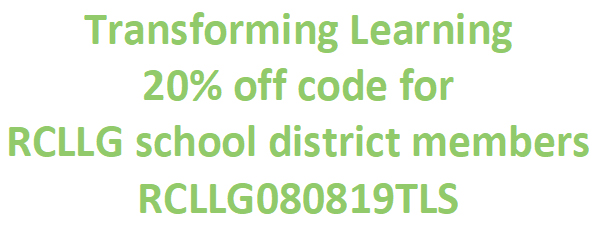2024 PTI Member Solution Award Recipients

Learn more about the 2024 PTI Member Solution Award WINNERS…
AI SOLUTIONS AWARD (250K)

A product, program or service that disrupts the current status quo and meets these three criteria:
Novelty: the degree of newness and uniqueness;
Impact: the magnitude and scope of improvement to government efficiency and effectiveness;
Replicability: the potential for replication in other government bodies or sectors.
THE WINNER IS… MONTGOMERY COUNTY, MD
WINNER:
The Monty 2.0 AI Chatbot
Montgomery County, MD
Montgomery County Government’s initial website chatbot, Monty, was deployed in January 2021 as an immediate solution to support the increased demand for service during the COVID-19 pandemic.
Read the Full Project Description
Montgomery County Government’s initial website chatbot, Monty, was deployed in January 2021 as an immediate solution to support the increased demand for service during the COVID-19 pandemic. The chatbot’s capabilities were eventually expanded to encompass a knowledge base of 20 service-related topics.
Maintenance of the website chatbot was laborious: updates to a knowledge topic required multiple programming revisions, including the manual diagramming of hypothetical conversations in multiple languages, to ensure satisfactory performance. Despite these intensive development efforts, residents often complained that the website chatbot was unresponsive and unhelpful.
Monty 2.0 GenAI Chatbot Program
The Monty 2.0 GenAI Chatbot program was initiated by Montgomery County Government to reduce the levels of effort associated with maintaining the MC311 Customer Service Center website’s chatbot, while simultaneously providing an improved and expanded user experience for residents.
The program was sponsored by TEBS Director and CIO Gail Roper and led by the TEBS Office of Change Management, with extensive support from the TEBS Low Code Governance and Administration team and input from the PIO MC311 Customer Service Center. The initial development and implementation of the program stretched over 10 months to accommodate extensive cooperation and coordination with various program stakeholders, including vendors, technologists, business analysts, public safety officers, legal professionals, community liaisons, and the public.
Technology Foundation and Development
The Monty 2.0 chatbot is built upon a foundation of Oracle-Siebel database, Microsoft Azure Cognitive Search, Microsoft Azure Open AI, and Zammo.ai AI technologies.
Development and implementation of all AI technology components were executed with the guidance and assistance of Microsoft and Zammo subject matter experts. To initiate the program, the TEBS Low Code Governance and Administration team configured Microsoft Azure Cognitive Search functionality using only public-facing information stored within the County’s existing MC311 Oracle-Siebel knowledge base. In short, Microsoft Azure Cognitive Search uses keywords and other metadata to sort, rank, and select content from over 3,000 MC311 topical knowledge base articles, in accordance with user queries.
The development team then configured Microsoft Azure Open AI functionality, which enables the transmission of the user query and selected knowledge to Open AI ChatGPT, where the information is transformed into a coherent text response. Lastly, the development team configured the Zammo chatbot itself: this included the design and development of prompts and workflows to personalize, restrict, and engineer chatbot performance within the Microsoft Azure Cognitive Search and Open AI environments.
Zammo prompt, grounding, and logic configurations, in particular, were repeatedly engineered over the course of the program to ensure that chatbot knowledge was restricted to only the 3,000 County-approved knowledge base articles included in the MC311 Oracle-Siebel database. This development emphasis eventually eliminated the occurrence of recurrent “hallucinations,” in which the chatbot’s GenAI technology produced unvetted, inaccurate, or made-up content in response to select user queries (for example, by using the internet to answer questions pertaining to other jurisdictions or making up hyperlinks when presented with unsourced materials in the database).
Testing and Operationalization
The project team engaged in over a dozen cumulative rounds of internal and external testing to vet proper functionality of the Monty 2.0 chatbot. The Office of Change Management, in conjunction with the MC311 Customer Service Center website, oversaw the operationalization of the standard operating procedures and processes outlined above.
Cybersecurity (250k+)

A product, program or service that disrupts the current status quo and meets these three criteria:
Novelty: the degree of newness and uniqueness;
Impact: the magnitude and scope of improvement to government efficiency and effectiveness;
Replicability: the potential for replication in other government bodies or sectors.
THE WINNER IS… HARRIS COUNTY, TX
WINNER:
Cyber Incident Response Coordination Plan
Harris County, TX
How do you coordinate communications for a cyber incident when impacts become larger than the IT department for the 3th most populous county in the United States?
Read the Full Project Description
How do you coordinate communications for a cyber incident when impacts become larger than the IT department for the 3th most populous county in the United States? Information Technology departments regularly maintain a Cyber Incident Response Plan, but how is communication coordinated when a large-scale cyber incident has countywide impacts outside of just IT, such as impacts to multiple departments or the public?
Harris County identified the need for a cybersecurity coordination framework in November 2023. In order to fill the gap, Harris County Universal Services in partnership with Harris County Office of Homeland Security and Emergency Management initiated the development of the Harris County Cyber Incident Response Coordination Plan (CIRCP). The development of the Plan consisted of coordinating planning efforts between multiple county departments including the Harris County Sheriff’s Office, Office of the County Attorney, and County Administrator’s Office in order to document a framework for cyber incidents that have the potential for countywide impacts. Plan development was completed in four months, a significant feat for a jurisdiction the size of Harris County.
The CIRCP plan outlined the roles and responsibilities for key partners in cyber incident communications and established the Cyber Disruption Response Team (CDRT), an additional coordinating group to the standardized Cyber Incident Response Team (CIRT). Where a Cyber Incident Response Team (CIRT) is designed to manage and mitigate cybersecurity incidents and threats, the Cyber Disruption Response Teams objective is to serves as a coordinating element for expanding needs from a large-scale or long-duration cyber disruption. The CDRT focuses elements such as departmental communications, public communications, logistics, and consequence management by engaging emergency management partners and related practices into a cyber response effort. The plan integrates the use of the Emergency Operations Center and the Joint Operations Center for a high-level strategic planning role as well as an expert public information sharing platform.
Cybersecurity (50k – 249K+)

A joint effort between two or more government agencies, two or more departments within a single agency, or between government agencies and private firms/non-profit organizations that use shared resources to create a new product or program, resulting in improved service delivery to individuals, families and/or communities.
THE WINNER IS… CITY OF AVONDALE, AZ
WINNER:
Cybersecurity Awareness Campaign
City of Avondale, AZ
Many training programs become mundane and are viewed as a task to rush through to get it completed. Recognizing the need to address cybersecurity training challenges, the Information Technology Department partnered with the Marketing and Public Relations Department to develop an innovative, engaging approach to cybersecurity training.
Read the Full Project Description
Many training programs become mundane and are viewed as a task to rush through to get it completed. Recognizing the need to address cybersecurity training challenges, the Information Technology Department partnered with the Marketing and Public Relations Department to develop an innovative, engaging approach to cybersecurity training. Leveraging the KnowBe4 ‘Inside Man’ video series, city staff combined interactive quizzes, discussions, and creative activities that transformed cybersecurity education from a passive checkbox exercise into an active, thought-provoking experience. The initiative aimed to raise awareness and foster a cultural shift within the organization where employees understood that their daily actions could either strengthen or compromise the city’s cybersecurity posture.
Despite initial concerns over participation and engagement, the program exceeded expectations. With over one-fourth of the city’s workforce attending the in-person event and overwhelmingly positive feedback, the initiative demonstrated that an interactive and collaborative approach to cybersecurity training could drive meaningful results. This marked the beginning of a strategic shift in how the city approaches cybersecurity education, laying the foundation for ongoing training, continuous engagement, and a more secure digital environment for all employees.” Another watch party is planned for later in September to enhance the impact.
IT focused on raising awareness and fostering an ongoing dialogue about cybersecurity, making it clear that every employee plays a vital role in protecting the city’s digital assets. The partnership with Marketing enhanced the program’s reach, using promotional strategies to build excitement and ensure a strong turnout. The support of city leadership further bolstered the event, emphasizing the importance of cybersecurity at every level of the organization.
Cybersecurity (<50k)

A product, program or service that disrupts the current status quo and meets these three criteria:
Novelty: the degree of newness and uniqueness;
Impact: the magnitude and scope of improvement to government efficiency and effectiveness;
Replicability: the potential for replication in other government bodies or sectors.
THE WINNER IS… BOROUGH OF WEST CHESTER, PA
WINNER:
Cybersecurity Staff Engagement
Borough of West Chester, PA
A truly effective cybersecurity strategy must engage and involve the entire organization, not just the technology staff.
Read the Full Project Description
A truly effective cybersecurity strategy must engage and involve the entire organization, not just the technology staff.
Engaging staff in the organization strategy must be engaging, consistent and enjoyable. For me I have created several ongoing engagements in the effort of creating an entire staff of cybersecurity crime fights. I publish a weekly cybersecurity newsletter, “Cybersecurity Friday”. A very popular part of this weekly newsletter if identifying our cybersecurity all-stars. These are employees who report suspicious messages to the IT Department. Eackh week’s newsletter has a cybersecurity theme. We also, every day release a “Cybersecurity Daily” YouTube video where we cover a cybersecurity topic in a 2-to-5-minute video.
In addition to all of this the IT Department has an open-door policy for all thins technology and cybersecurity plus two classroom sessions each year.
Creating a positive, fun and engaging environment around cybersecurity is critical to protecting the organization.
DIGITAL/WEB SERVICES (250k+)

The delivery of digital information and transactional services that makes a difference in the lives of citizens. Nominations should meet these criteria: a strong focus on the end-user’s accessibility and experience, a high level of citizen engagement, incorporation of the technologies used by today’s citizens, and timely, informative content.
WINNER:
E2Lite Applications
Alameda County, CA
MS Access Database applications are well past their prime. With security risks, performance issues and other constraints, migrating to newer systems is a must.
Read the Full Project Description
MS Access Database applications are well past their prime. With security risks, performance issues and other constraints, migrating to newer systems is a must. Alameda County ITD faced the problem that manually converting these databases is estimated at a little over 1 developer year per database by Microsoft. The number of databases in the backlog invalidates this manual conversion, which is why Alameda County ITD worked towards generative coding development. For this development, we targeted an SSA Access Database used for Clinic List Auditing, named “E2Lite”.
In response to these issues, Alameda County ITD created an Access Code Generator, which takes an existing MS Access Database and creates the same web application. The resulting web application includes all business logic and pages. This solution was designed to work for all different types of Access databases and to be scaled to support multiple applications.
The development for this process was said to be completely impossible, but Alameda County ITD believed otherwise. Beginning this process, we targeted the information that we could extract from Access, such as forms, reports, queries and tables, and generated corresponding JSON files for each of them. From these configuration files, we determined that we could use a process of geometry calculations for element positioning and responsive UI for the forms and reports. We created standard components and reusable architecture to support common modern world styling.
The biggest remaining issue at this point was in tackling the business logic conversion. While exploring this, we quickly discovered that there were 0 existing convertors to take Visual Basic for Applications (VBA) code and separating it into both frontend and backend technology stacks. We tackled this issue with both Roslin Language Models as well as an extensive Regex mapping framework which enabled us to create conditional, smart, and automated Angular Typescript.
The last issue presented by this effort was data migration. On the data migration side, we leveraged preexisting tools like Microsoft SQL Migration Assistant for Access as well as manual intervention to migrate the schema to SQL Server. Once on SQL Server, we were able to handle multithreaded data requests as well as set up data access requirements. On our generated project backend, we chose packages designed to handle this approach with Rest API integration and Dapper calls.
DIGITAL/WEB SERVICES (50-249k+)

The delivery of digital information and transactional services that makes a difference in the lives of citizens. Nominations should meet these criteria: a strong focus on the end-user’s accessibility and experience, a high level of citizen engagement, incorporation of the technologies used by today’s citizens, and timely, informative content.
WINNER:
Citizen Connect
Roanoke County, VA
Easily accessible info that helps residents, contractors and staff determine their permit status was not readily available in one holistic web service app solution. Fulfilling
Read the Full Project Description
The County sought an easier way to offer consolidated information from Development Services’, Cityworks: Permits, Licensing & Land and Enterprise GIS about permit status info into a single, easy-to-use app that allows users to find info with the most commonly used search methods. A key objective in the project was to make all permit status info quickly, across a variety of platforms and technologies, including today’s mobile devices.
GIS Services in IT maintains the Cityworks platform and its Permits, Licensing & Land (PLL) module as well as parcel outlines, voting precincts, polling places, address data, street centerlines and zoning data to create the foundation of GIS services in the County of Roanoke. This approach ensures data consistency across the County’s various departments and assorted apps.
Citizen Connect offers an easy-to-use view of permit info that consolidates various data sources from the County’s Enterprise GIS database and permitting software. Using Citizen Connect, Microsoft SQL Server, ArcGIS Enterprise platform and Cityworks: PLL, GIS Services was able to integrate the Citizen Connect Permit Status data into its GIS platform utilizing ArcGIS Experience Builder, providing detailed info such as Parcel ID, Account Number, Owner Name, Site Address, Permit Number, Permit Description, Initiated Date, Status and Workflow Task Info in an intuitive and easy-to-use web app.
Citizen Connect solution allows info discovery by simply using a custom auto-complete search engine that allows discovery based on most searched attributes, including street address, owner name, or tax parcel ID number.
This level of integration into a common GIS platform also enables staff to enhance the County’s application with tools that provide the ability to print reports, select custom basemaps, measure features, draw features, create customized bookmarks and share the app by posting it to a social media account, sending an email with a link, or embedding it in a website or blog.
Citizen Connect solution offers the same functionality when accessed on a desktop PC, mobile phone, or tablet. Designed as a mobile app from the ground-up, Citizen Connect solution offers comprehensive Development Services info in the palm of a user’s hand.
Now, county citizens & staff members use Citizen Connect to quickly access data, including Parcel ID, Account Number, Owner Name, Site Address, Permit Number, Permit Description, Initiated Date, Status and Workflow Task Info in an intuitive and easy to use web app.
The overall goal of developing the Citizen Connect solution was to minimize administrative overhead of fulfilling staff and public requests for permit status info for active apps submitted to the County of Roanoke while maximizing access to public data delivery in the most convenient and accessible formats for staff and public alike. With Citizen Connect App, all citizens, staff, & commercial stakeholders can access comprehensive permit status information they need on any device, at any time, and anywhere.
GIS SOLUTIONS (250k+)

An individual who champions and implements innovation, inspires collaboration, is focused on improving service, and demonstrates a personal commitment to advancing the professional and career development of him/herself as well as others in their agency.
WINNER:
Emergency Operations Center Dashboard
City of Mesa, AZ
The Commissioner’s office required an application to visualize and track emergency situations to show road closures, damage areas, and resources provided to citizens. A separate app provides the ability to track employee situation and availability during storms. For recovery, GIS dashboards provide insight into debris pickup location and volume.
Read the Full Project Description
The Commissioner’s office required an application to visualize and track emergency situations to show road closures, damage areas, and resources provided to citizens. A separate app provides the ability to track employee situation and availability during storms. For recovery, GIS dashboards provide insight into debris pickup location and volume.
Using ArcGIS online templates, the team created several web mapping applications to address the requirements of the Commissioner’s office.
The City of Mesa’s Emergency Operations Center (EOC) dashboard was developed to address the city’s need for real-time threat detection, incident response, and information sharing across emergency management and executive teams. The dashboard consolidates various critical functions, including monitoring gas and fire explosions, damage from gas line hits, and electric issues, identifying utility locations, and locating healthcare and emergency services facilities. It also provides data on special events, weather conditions, and potential hazards, such as extreme heat and flooding.
One key feature of the dashboard is its live integration with internal and external systems like Cityworks, which enables real-time monitoring of energy incidents, including gas and electric issues. Additionally, it incorporates data from Salt River Project (SRP) to track power outages, providing detailed descriptions and updates on restoration efforts.
The dashboard’s geospatial data capabilities allow the EOC team to visualize hazards like floods and extreme temperatures, aiding in decision-making during emergencies. It also integrates social media and live feeds to monitor the dissemination of information to the public. The mass care map, showing locations of hospitals, shelters, and Fire/EMS stations, supports effective emergency responses.
Overall, the EOC dashboard enhances situational awareness, providing city officials with the tools needed for timely, informed decision-making during emergencies.
GIS SOLUTIONS (50- 249k+)

An individual who champions and implements innovation, inspires collaboration, is focused on improving service, and demonstrates a personal commitment to advancing the professional and career development of him/herself as well as others in their agency.
WINNER:
Stormwater & Outfall Management Application
Roanoke County, VA
The Town of Vinton Stormwater Management team employed printed PDF docs to take into the field to track, evaluate & document any outfall or stormwater issues.
Read the Full Project Description
Challenges with Existing Process
The Town of Vinton Stormwater Management team employed printed PDF documents to track, evaluate, and document any outfall or stormwater issues in the field. This often proved challenging due to weather-related issues, complicated forms, and subsequent data entry upon returning to the office. Even with the best of care, the forms could become damaged, illegible, or contain errors.
The number of outfalls needing inspection varied daily, and the increased number of forms added to data-related issues. The Town needed an effective, modern way to collect data to make it easier to keep and store information and make it available for statistical tracking.
GIS Foundation and Integration
The County of Roanoke IT’s GIS Team maintains parcel outlines, address data, street centerlines, and zoning data to create the foundation of GIS services in the County. This approach ensures data consistency across the County’s various departments and applications.
GIS Services leveraged Esri’s ArcGIS for Enterprise Platform technology to integrate this GIS foundation with data from both legacy in-house systems and third-party commercial services, providing a single point of reference for all information. Through a cooperative partnership, Roanoke County assists Vinton with GIS software and tech support and maintains the Enterprise database features necessary to show the Town’s features within cross-jurisdictional web applications.
Modernizing the Process
Vinton sought to modernize its inspection process to make it easier, especially for new employees unfamiliar with the program’s paper workflow. Taking the lead to portray this information in a more visually accessible manner, the County’s GIS Team developed an innovative app and process to achieve this goal.
Leveraging existing parcel, address, and digital stormwater information, the app utilizes the Esri FieldMaps mobile app and an Enterprise Portal web map containing pertinent stormwater-related information. Using FieldMaps’ cascading inquiry methodology, more data can be collected if it satisfies the embedded logic.
Features of the FieldMaps App
As inspectors enter data, additional questions and data entry queries become visible to increase detail about the feature. If an outfall is damaged or other items are present, the inspector can take pictures using the device’s camera, attach them through the app, and store them with the rest of the data.
If samples need to be lab analyzed, the results and the lab report document can be entered into the app to keep all data together. When the inspector places a new or edits a previously created feature, the underlying Arcade script searches for the nearest parcel, captures the ParcelID, and creates a unique identifier called a GPIN, derived from the latitude and longitude of the point. Both values make the outfall points easier to locate and spatially relevant within the digital web map.
Post-Inspection Analysis
Using ArcGIS Pro, staff can revisit the work within the rest services, check the results of daily tasks, and enter any data that was missed or later required.
Costs and Efficiency Gains
The total one-time start-up cost, which includes design, development, and configuration, for the app is $6,200. The only project cost in developing the application is personnel time, excluding the County’s investment in the overall GIS Enterprise infrastructure.
This cost included staff hours needed to create and modify the schema for the feature, integrate data from both localities, create the FieldMaps application framework, and develop the Arcade-based logic. As part of the County’s overall infrastructure, the Esri Small Government Enterprise License Agreement is $55,000.
The FieldMaps app and created feature service have significantly increased the efficiency of inventorying and managing the Stormwater Outfalls.
IT GOVERNANCE (250k+)

An individual who champions and implements innovation, inspires collaboration, is focused on improving service, and demonstrates a personal commitment to advancing the professional and career development of him/herself as well as others in their agency.
WINNER:
Call Logging System
Alameda County, CA
The “Call Logging System for UOCAVA and RAVBM Voters” addresses the critical issue of inefficient communication and management processes for overseas and remote voters in Alameda County.
Read the Full Project Description
IT GOVERNANCE (<50k+)

An individual who champions and implements innovation, inspires collaboration, is focused on improving service, and demonstrates a personal commitment to advancing the professional and career development of him/herself as well as others in their agency.
WINNER:
Building Foundational Infrastructure
City of Newark, CA
The core challenge faced was the creation of the City of Newark’s first official IT department from the ground up, a task spearheaded by the CIO/IT Director.
Read the Full Project Description
The mission was immediate and multifaceted: build a cohesive team while simultaneously executing high-priority projects to support critical City operations. The challenge was twofold. First, the foundational IT infrastructure needed to be established, processes implemented, and security protocols introduced. Second, smooth delivery of IT services to city staff and departments without causing disruption or delays in day-to-day activities. The pressure was significant working under an aggressive timeline, aiming to deliver results swiftly while ensuring the systems put in place could support the City’s long-term technology needs.
When tasked with building the City’s first-ever IT department, we knew it would require more than just setting up systems—it was about laying the foundation for security, efficiency, and continuous service for all city operations. The goal was to create a resilient and forward-thinking IT Department that could support the evolving needs of the city and its staff. The first actions included the development of a Technology Master Plan to identify the governance required to implement a successful IT Department. While addressing city and departmental needs, it was evident that one of the most critical challenges needed to be addressed: cybersecurity. Security Operations Centers (SOCs) and adopted SOC-as-a-service for round-the-clock monitoring and support were established. This ensured that potential cyberattacks could be swiftly identified and addressed, minimizing disruption to city services and safeguarding public trust.
Recognizing the growing threat of malicious email attacks, an advanced email security solution was deployed. This was essential to protect the city from phishing attempts, ransomware, and other email-based threats. To complement this, data security software was implemented to ensure that sensitive data across departments, including constituent records, was continuously monitored and protected.
Additionally, Directory Services Protector (DSP) was introduced to fortify the Active Directory system, preventing unauthorized access to critical city resources. Network and firewall upgrades followed to ensure secure data transmission and communication between city departments.
Supporting city staff was another major focus, which led to the creation of a 24/7 Helpdesk Support Line to provide immediate technical assistance. This service proved particularly valuable during off-hours and emergency situations, ensuring uninterrupted city operations, especially for public safety departments. To address potential system vulnerabilities, vulnerability scanners were deployed, and regular penetration testing was implemented to identify and fix weaknesses before they could be exploited.
Finally, the cybersecurity awareness platform for city employees was upgraded to a Human Risk Management Training platform to change behaviors and empower the workforce to see and stop cyber threats. Since human error is often the weakest link in security, we conduct regular training to help staff recognize and respond to threats like phishing emails. This cultural shift toward heightened security awareness was just as important as the technical measures. These efforts have not only bolstered IT infrastructure but transformed the way the city operates, improving security, response times, and overall efficiency across departments.













